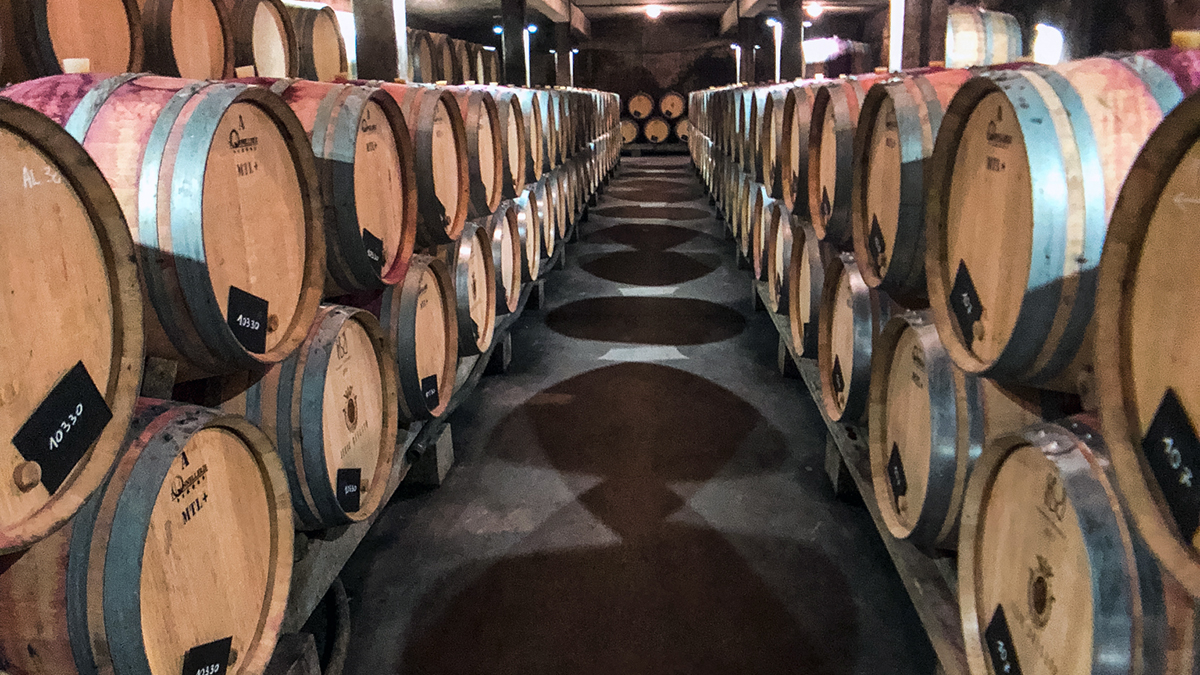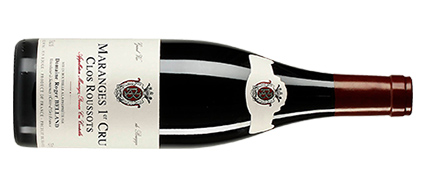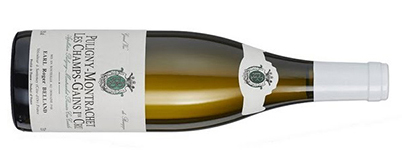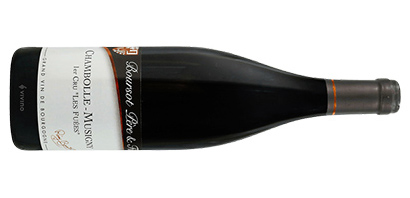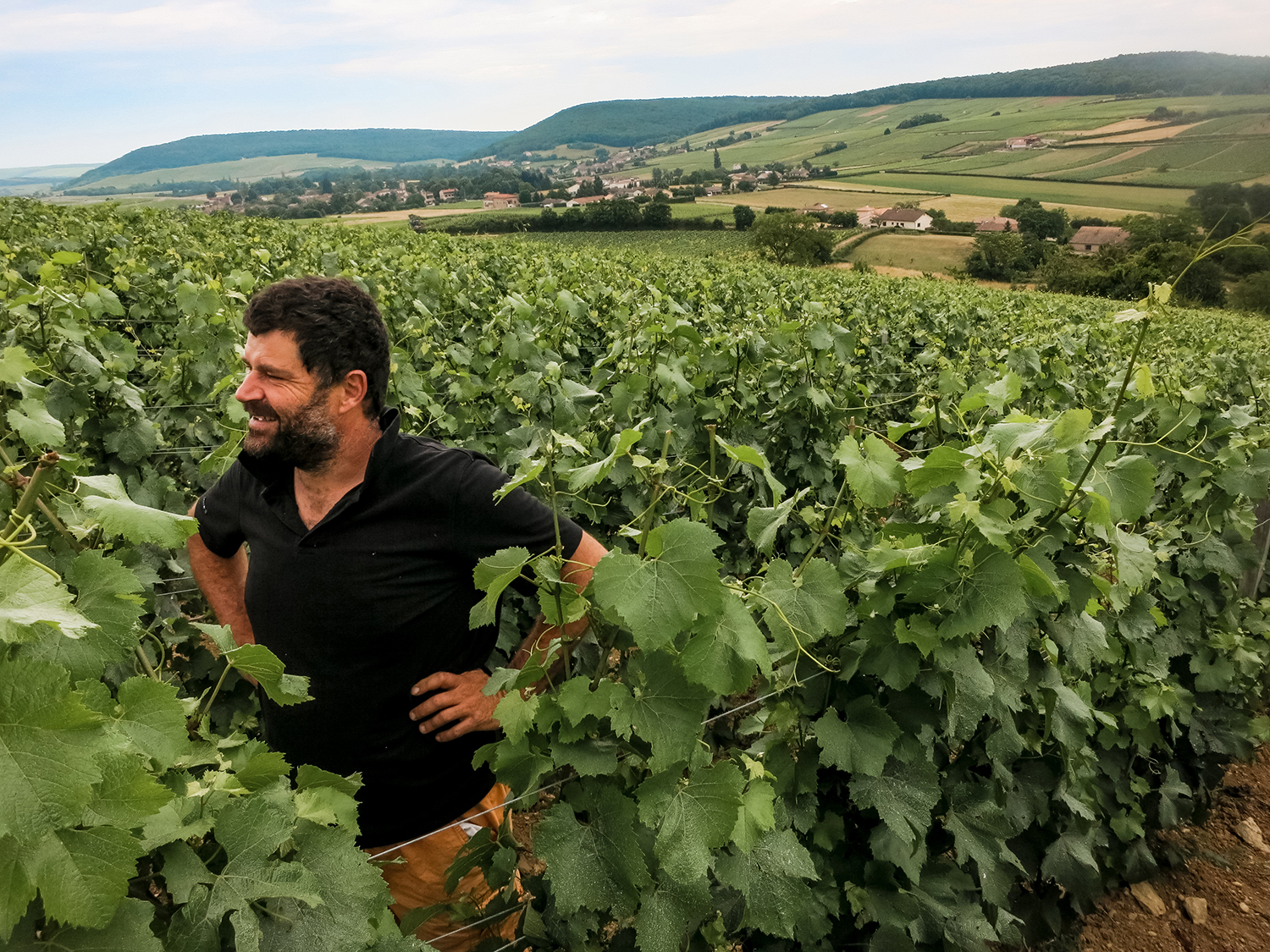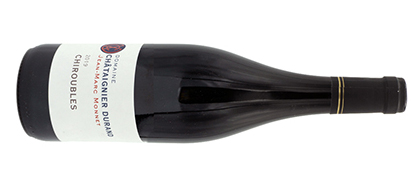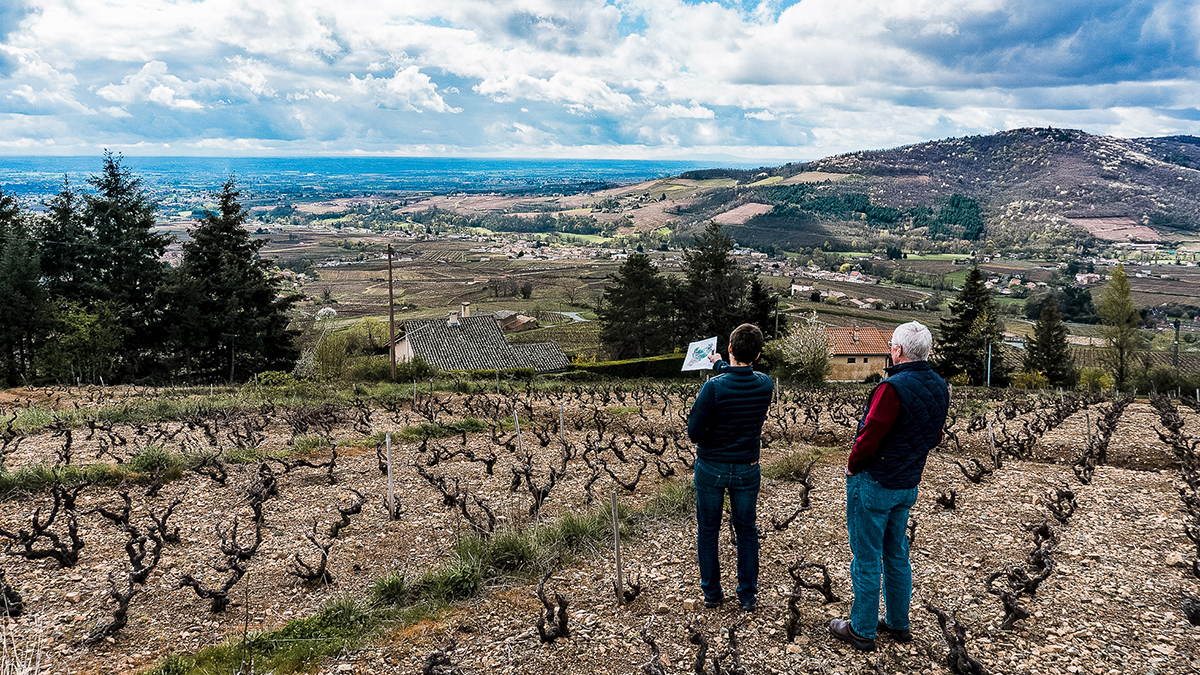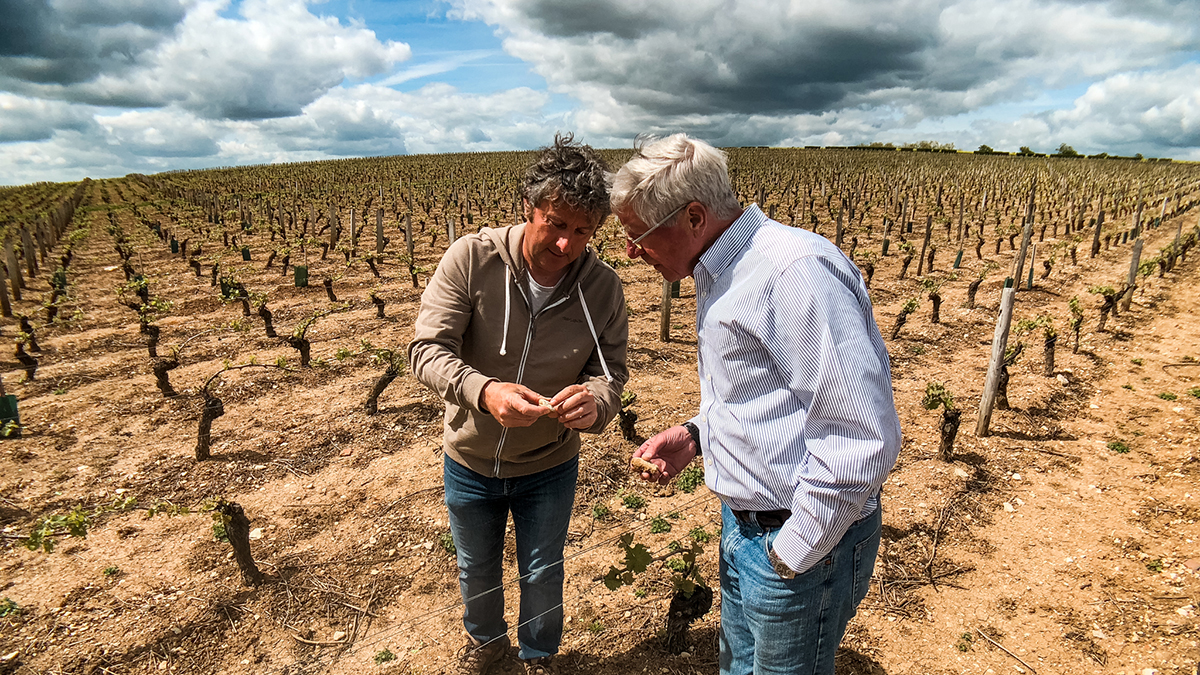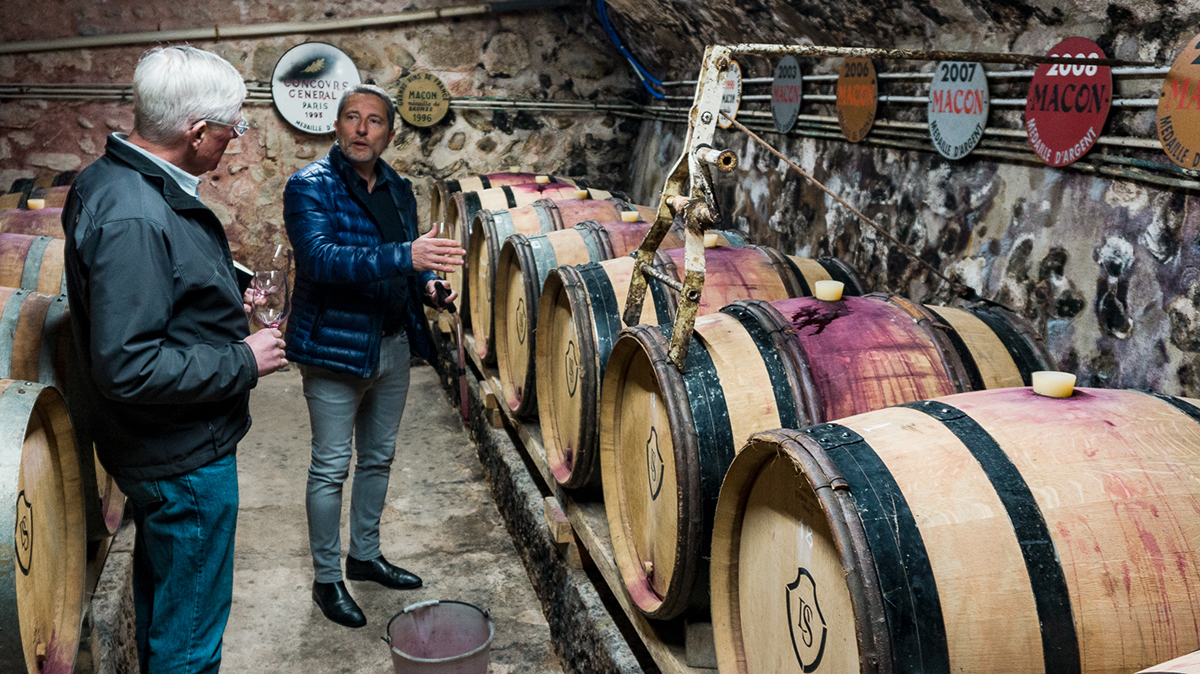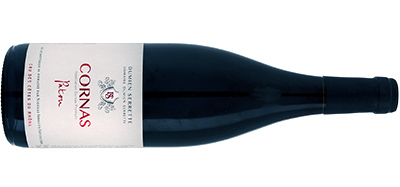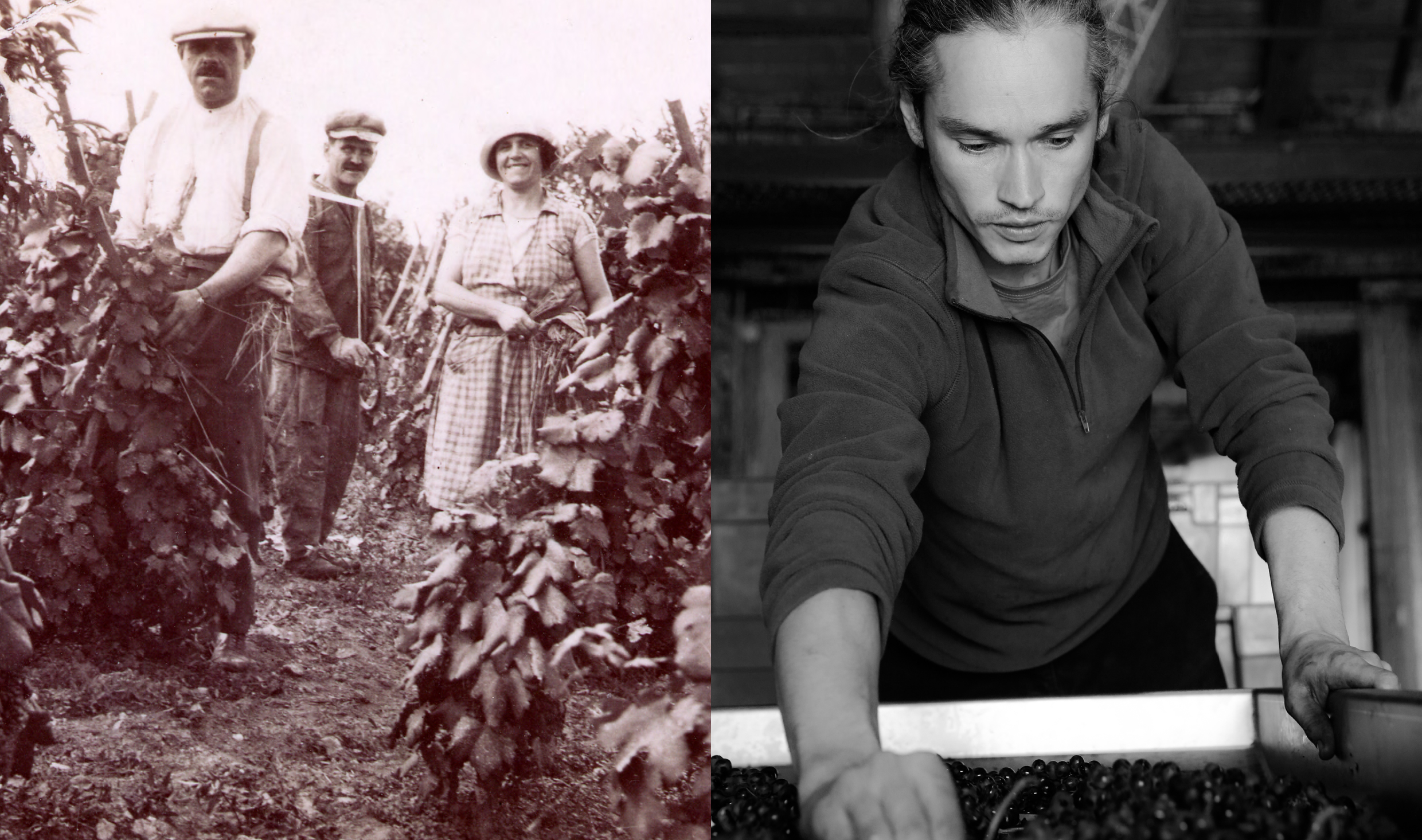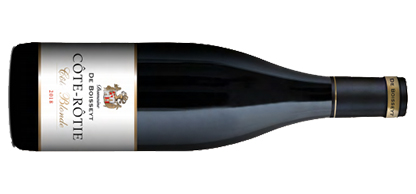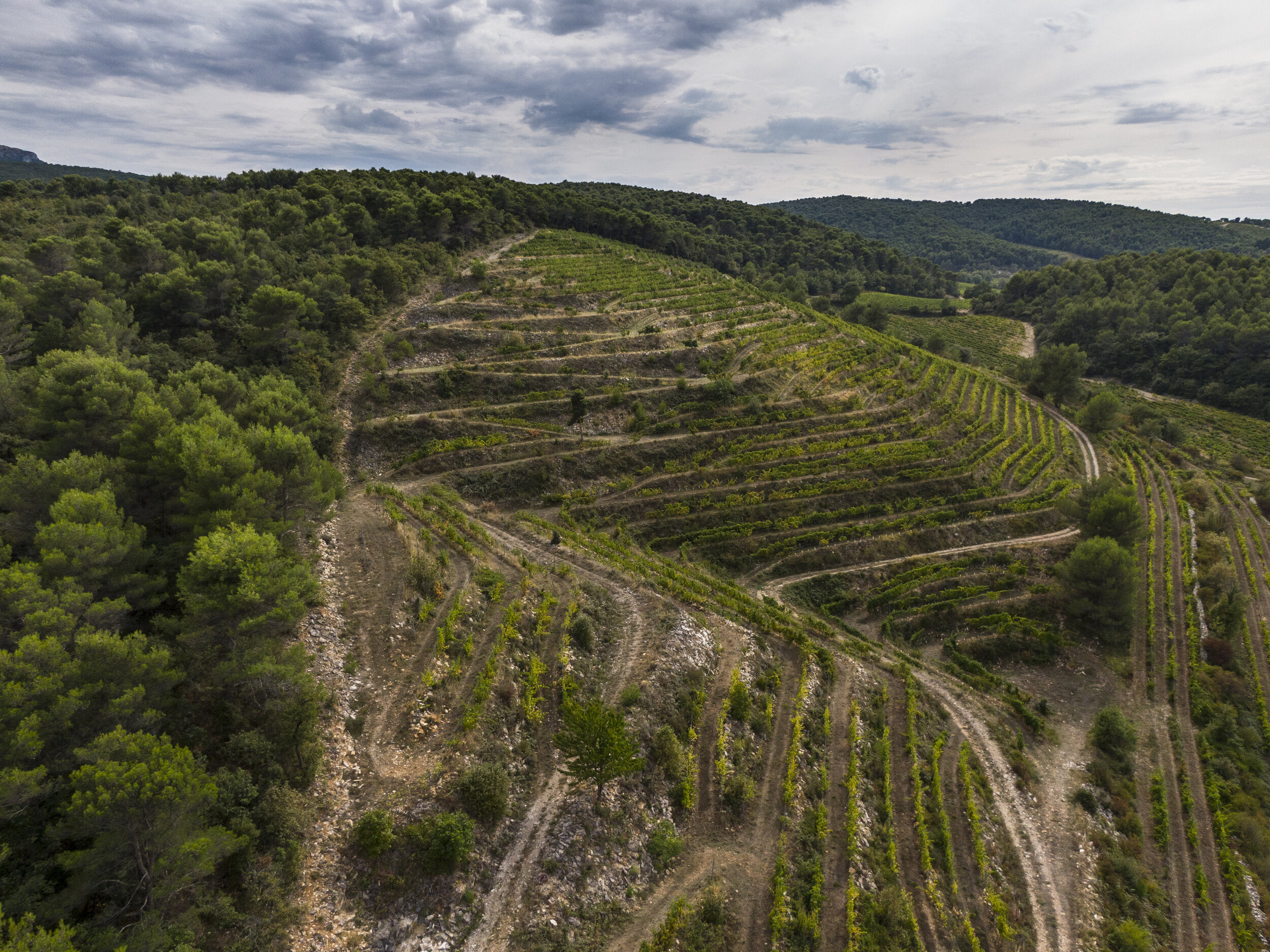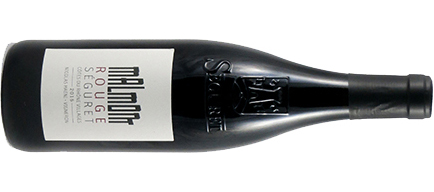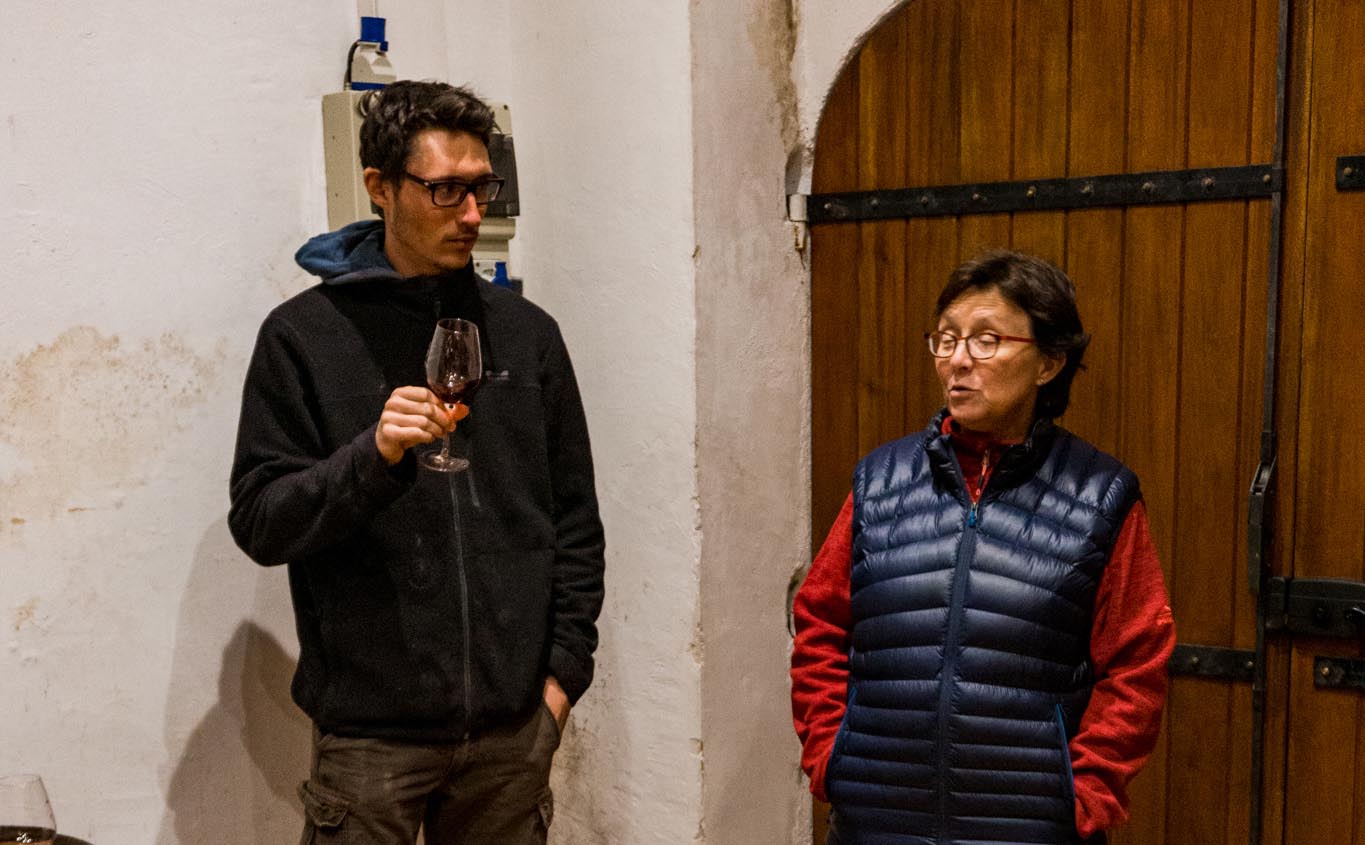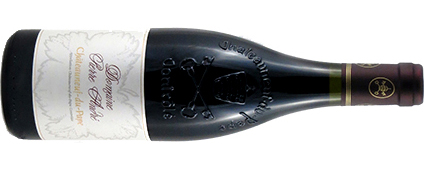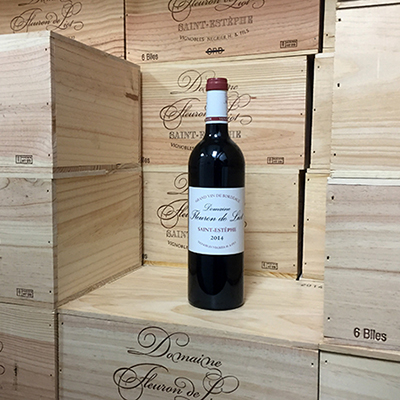Evidence continues to mount that the widespread excitement over 2019 red Burgundy is well deserved. In preparation for this offering we have been through another round of them, and we found an embarrassment of riches. (We’re now looking into open corners of our personal cellars to find places to tuck some away.) In fact, 2019 was an attractive vintage all across France, where hot and sunny weather prevailed as the ripening season drew to a close. We are delighted to offer here a long list of first rate 2019 Burgundies, in red and in white, from both the Côte de Nuits and the Côte de Beaune. There is also no-oak chardonnay from the Maconnais and no-oak Sauvignon Blanc from the upper Loire. As we descended the Rhône, we found a superb vintage in sunny Cornas and an exciting new producer with first-rate Côte Rôtie and St. Joseph to sell. In the Southern Rhône there is world class Chateauneuf du Pape and delicious red from a nearby village. And finally a tasty Left Bank Bordeaux with unusually good pricing. As always, we have tried to include something for every taste and budget. If you find anything of interest, be sure to get your orders in by the Order Deadline of July 18, 2021. We will place orders for the wine immediately thereafter. We expect these wines to arrive in September/October. Jump to Section Belland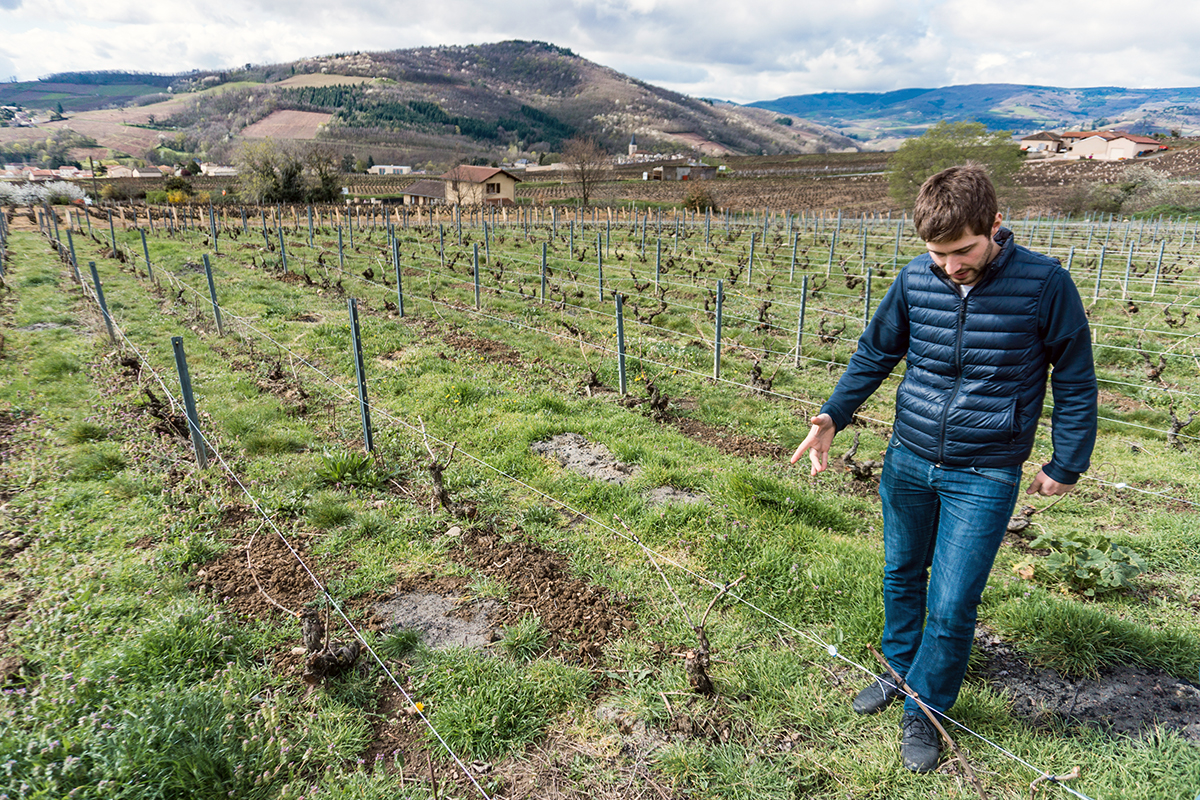
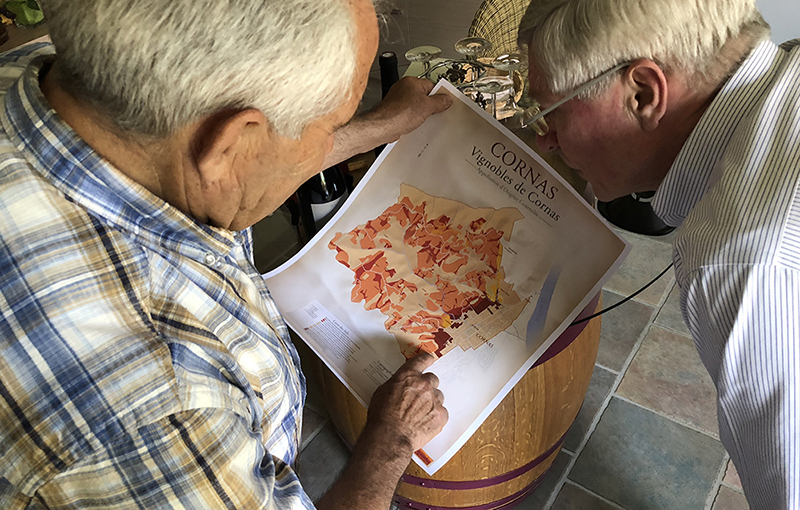
Boursot
Maillet
Monnet/Perrachon
Michot
Dumien-Serrette
De Boisseyt
Malmont
André
Fleuron de Liot
July Futures
Order Deadline: 7/18
Roger Belland
Santenay, Burgundy
For years the Domaine Roger Belland has provided Ansonia customers with a wide range of well-priced Burgundies in both red and white. The 2019 vintage is a particularly attractive blend of high quality and ready accessibility, and reminds us why Belland’s wines are always so popular. The Domaine is based in Santenay, near the southern end of the Côte de Beaune (with only Maranges farther south). The wines from Santenay and Maranges fall on the ripe end of the spectrum of any vintage, due to the Côte de Beaune’s slight right turn at this end to face more directly south.
Belland’s Maranges 1er cru “Clos Roussots” 2019 is a great choice for near-term drinking. There’s ripe red cherry Pinot fruit in the nose and excellent volume in the mouth (but like many 2019s, without any heaviness). Though it has less complexity than its neighbors to the north, it is a nimble wine that will be attractive in a wide range of settings, including all by itself at the end of a work day. We have two premier cru Santenays to suggest. Many of you have already reserved Gravières, Santenay’s best-known premier cru vineyard, based on last week’s post (link to post here). The 2019 Gravières is a delicious blend of fruit and minerals, with great energy and enough structure to support aging if that’s your choice; but it should also drink well as a young wine.
So many of you buy its premier cru neighbor “Beauregard” every year that we wouldn’t think of leaving it out of this offering. Indeed, 2019 is a very fine year for this wine. This Beauregard has excellent shape and texture. It offers a round and approachable blend of fruit and spice, and though it’s eminently drinkable now there is enough structure to promise good evolution over the next five years or so, depending on storage. Beauregard has a slightly softer structure than Gravières, and a bit more width — both are delicious and excellent values. Roger Belland’s signature property is a large premier cru monopole in Chassagne-Montrachet, lying right along the border with Santenay. Though its white wine draws more attention, the red is a fine, ageworthy Burgundy in its own right. Like most red Chassagne, the 2019 Chassagne Montrachet 1er cru “Pitois” rouge has a dense supporting structure that needs some time for integration with the other elements: dark currant fruit, spice, earthy minerals, and a nicely balanced dose of oak. This is serious wine, more dry than juicy, and in a few years it should provide a wonderful accompaniment for all manner of roasts, steaks, and chops of beef, pork and veal. Jasper Morris found it “particularly intense” with “light cocoa powder on the red fruit.”
Santenots is that well-known premier cru vineyard that straddles the border between Meursault and Volnay, and takes a different village name for each color. Belland’s Volnay 1er cru “Santenots” is easily his most elegant red wine, with lively aromatics and plenty of substance. Its structure is hidden in the beautiful fruit and its very fine-grained tannins support a wine that will be perfumed, silky, and lacy when it matures. Burghound, who awarded it 92 points, counsels patience for this gem. Belland also made delicious white Burgundy in 2019. White Santenay suffers from the same lack of attention as Red Chassagne, with the result that very good value can be found in each category. That’s not to say that Belland’s Santenay 1er cru “Beauregard” blanc is the equivalent of his Chassagne 1er cru — but at just over half the price, is very much worth your attention. The 2019 Beauregard blanc has good freshness to support its ripe fruit, a mix of orchard and citrus. The oak trails the assertive fruit at this stage, but the two should knit together soon. Though the wine is ripe, it is not the least flat or flabby, and should provide much enjoyment over the next five years or so. Morris found “a chiseled backbone,” and “just the right degree of flesh.”
Belland’s Chassagne-Montrachet 1er cru Morgeot “Clos Pitois” blanc is delicious in 2019. It has considerable concentration and intensity, and while it will need a bit of time to round out, it will be excellent. There is more minerality and stoniness mixed in with the fruit here, and the nose includes floral notes of white peach flower. This white wine is focused and serious, and should amply reward cellaring. Morris agreed, awarding 93 points and finding “really significant weight to this, and in balance,” concluding “substantial and very long.” Belland offers a premier cru from each of the other famous white wine villages of the Côte de Beaune. In Puligny-Montrachet, there are vines from the Champs Gains premier cru vineyard. The 2019 has a lovely nose that opens beautifully with an elegant mouthfeel, the oak and fruit in fine balance. There is good freshness, a bit less prominent than that of the Clos Pitois, and the wine is certain to round out before long. With a bit of time this could be a real head-turner.
From the premier cru Santenots vineyard there is a fine Meursault. As you might expect, it has a good deal more body than the Champs Gains from Puligny, but it is powerful and subtle at the same time. With the fruit there are floral notes reminiscent of Meursault’s Genevrieres vineyard. Burghound, who found it “rich and generously proportioned,” found a “blend of lemon-lime, pear, Granny Smith apples and discreet wood nuances.” He thought it would reward 6 to 8 years of cellaring; we think it will also provide great pleasure much sooner. Finally, the Grand Cru Criots-Bâtard-Montrachet 2019 unquestionably has the size and weight of a Grand Cru. Burghound, who awarded the wine 93 points, found “excellent richness and volume” and a “compact, powerful finish.” There is all sorts of complexity in the flavors, from orchard fruits like peach and apricot, to confit of citrus, to the buttery flavors that come in butter crackers. Morris awarded 94 points, finding it “rectilinear, powerful, balanced, and with Grand Cru persistence.” Tasting this cuvée young often requires us to peer deep into the future to see its potential; the 2019 required no such speculation — it’s young but already enormous. Quite a wine if you have both budget and patience.
BELLAND Maranges 1er cru “Clos Roussot” 2019: $325 Santenay 1er cru “Beauregard” blanc 2019: $450
(case prices)
Santenay 1er cru “Beauregard” rouge 2019: $395
Santenay 1er cru “Gravières” rouge 2019: $395
Chassagne-Montrachet 1er cru “Pitois” rouge 2019: $595
Volnay 1er cru “Santenots” 2019: $795
Chassagne-Montrachet 1er cru “Pitois” blanc 2019: $850
Puligny-Montrachet 1er cru “Champs Gains” 2019: $995
Meursault 1er cru “Santenots” 2019: $995
Criots-Batard Montrachet Grand Cru 2019: $3540
Domaine Boursot
Chambolle-Musigny, Burgundy
The Boursot family are not exactly newcomers to Chambolle-Musigny, having grown grapes and made wine there since 1550. But with cramped facilities in the cellars of the old town hall, quality winemaking became increasingly difficult. A few years ago the fifteenth generation of Boursots decided that their four hectares of precious Chambolle terroir deserved better, so they moved the winemaking to a new facility just across the RN74. The results are striking: the wines have become far more vibrant and balanced, as each vintage reveals the beautiful terroir that is the family’s heritage.
The Boursots also make excellent wine at the regional level, and we have a pair to suggest from the 2019 vintage. First, the 2019 Bourgogne is an exceptional value at $250 per case. Raised entirely in vats, it offers a pretty red fruit profile of ripe strawberries and raspberries. Its medium weight fits well with the expressive nose, which opens up nicely with a bit of time in the glass. The mouth shows a nice chalky detail, with unusual precision for its level. If you’re looking for something more serious, consider the Côte de Nuits Village “Les Retraits” 2019, which offers darker fruit and more weight. This wine, from a parcel that adjoins the famous Nuits St. Georges 1er cru “Clos de la Maréchale,” has become very popular. Vinous’s Neal Martin was a particular fan of the 2019, praising its “attractive bouquet,” its “energy and charm,” and its “sensual finish.” The 2018 Côte de Nuits-Villages is terrific these days, and we have high hopes for the 2019 as well.
At the village level, the 2019 Chambolle-Musigny “Nazoires” is first rate Chambolle. The nose offers a pleasant mix of ripe fruit and muted oak; the palate has just the right shape — silky with just a hint of structure; and it persists well through the finish. It shows the gorgeous texture and balance for which the vintage has become known. Excellent village level Chambolle in a terrific year. There are three premier crus: “Chatelots,” “Lavrottes,” and “Fuées.” The 2019 “Chatelots” has a pleasant dark fruit nose with a nice dollop of toast. It represents a step up in intensity from the village, with lots of body and structure. Though clearly young, this wine is very Chambolle — silky and floral. Neal Martin awarded 90-92 points, and called it “all nicely defined and quite glossy,” predicting it would “drink nicely over 12 – 15 years. (It will never last that long in our cellar.) Second, from a vineyard across the road from the great Grand Cru Bonne Mares, Boursot produces two barrels (600 bottles) of Chambolle 1er cru “Lavrottes.” The 2019 has a similar nose to the Chatelots, but it has even more depth and intensity in the mouth. There is lovely honeyed fruit with a touch of mint on the palate, and some floral violet aromas show up at the finish. It’s a more serious wine, with less perfume and more structure depth than Chatelots, but one we think will drink beautifully in 5 years.
Finally, there is Fuées, along with Amoureuses the most celebrated of Chambolle’s premier crus. The 2019 vintage will need some time to develop, but all the elements of a great vintage are there: deep intensity, good supporting acidity, and supple tannins. Vinous’s Neal Martin predicted a score of 91-93. He praised its “fine length” and found a “refined bouquet that displays good terroir expression, touches of sous-bois and black truffle filtering through the red berry fruit.” If you don’t have the patience to wait for the 2019, consider the 2016, a fine but often overlooked vintage that will arrive with a few years under its belt. It is showing beautifully right now, with a lovely nose of plums and violets and excellent balance, but has many happy years ahead of it as well. (By the way, Neal Martin also loved this wine, calling it “superb Chambolle-Musigny with great tension and a long, cassis-tinged finish.”)
Nicolas Maillet
Macon, Burgundy
The white wines of the Maconnais have long languished in the shadow of the Côte d’Or, partly because of the excellence of Côte d’Or whites and partly because of the great volume of undistinguished wine made in cooperatives and sold under the label “Macon Villages.” But there is some superb terroir in the Maconnais. Pouilly-Fuissé’s quality has long been known (with the premier cru designation finally available for its best terroir since 2020), and the towns of Viré and Clessé now have their own appellation.
Nicolas Maillet is at the forefront of a new generation of producers making wines that reveal their fine terroir. We have just two to suggest in this offering — his excellent 2020 Pouilly-Fuissé (now a premier cru) will be available in the fall — and they are both delightful expressions of their place. Every aspect of Maillet’s winemaking follows organic and biodynamic principles, with slow fermentation by ambient yeasts stretching over months sometimes. He owns no barrels, choosing instead to age everything in tank.
Maillet’s Macon Villages 2019 (already in some of your cellars) shows remarkably pure lemon fruit, a product of its limestone soils and the leisurely, cool elevage. The vines for this wine are on a west-facing slope that sees much sun, so the wine is ripe and round. The second wine, his Macon Verzé 2019, lies on east facing slopes, with less sun and therefore more freshness and verve. A mineral line runs through the Verzé, adding complexity and length. Both wines are excellent, and we drink both regularly. The Macon-Verzé is particularly fine in 2019, with loads of ripe fruit balanced by bursting freshness. With no oak to get in the way, both wines are a particularly good match for shellfish, from oysters to lobsters to clams. We often serve the lively Verzé with oysters on the half shell, and turn to the rounder Villages for lobster. And try either paired with hard cow’s or sheep’s milk cheese; or all by itself as an apéritif.
Monnet & Perrachon
Juliénas, Beaujolais
From the Beaujolais we have two producers, both of whom offer excellent “Cru Beaujolais” from the ten towns with the most distinctive, age worthy wines. They have quite different styles, so we offer them in Futures together. Jean-Marc Monnet is a very small producer making traditionally styled Beaujolais, juicy and exuberant. Laurent Perrachon’s family domaine offers a long list of Cru wines, some raised in vats, others in foudres or small oak barrels. These are more serious wines, meant to be aged to yield greater complexity. Both are delicious, and all are well under $20 at Futures prices. All will arrive in the US in September, just in time for autumn Beaujolais season.
Monnet offers two just-bottled 2020s. Chiroubles is always lighter in weight, with its pure, crunchy fruit front and center. The hot year makes this Chiroubles “bigger” wine than is often produced here, but we thought it just delicious. Take it along to a tailgate for a Fall football game, or serve it with your Thanksgiving turkey. It’s bright and intense, with notes of cranberry, peony, and graphite. Monnet’s old-vine Julienas would also serve well at either function. Its fruit is darker and its intensity greater than the Chiroubles. Fine-grained tannins provide support and the wine persists on the palate nicely. This is a fuller, more serious Beaujolais with excellent balance. Monnet’s style gives both ripe fruit and approachable tannin.
From Perrachon there are three wines, two from Moulin à Vent, the Cru best known for ageworthiness. Perrachon’s style features a bit more extraction, and the wines, though 1-2 years older than Monnet, show a firmer backbone. The first is Moulin à Vent “Terres Roses” 2019. It is entirely vat-raised, resulting in an ultra-smooth and silky body. The 2019 vintage adds another level of intensity, and while the wine is of medium weight, its density promises good evolution. We were amazed at the way the 2015 “Terres Roses” developed over the course of three years, and we are eagerly looking forward to a similar evolution from the 2019.
The second wine from Perrachon, Moulin à Vent “Les Burdelines” 2018, is raised like a Côte d’Or red Burgundy — in small oak barrels. Though it is of course Gamay, the wine can evolve strikingly like Pinot Noir. Indeed there is a term in the Beaujolais, “pinoté,” to describe the way the bouquet evolves to mimic Pinot Noir. The nose shows a lovely mix of Gamay perfume and woodsy toasty sweet spice. The finish is quite long, and tasted blind you’d have a hard time pegging this as Beaujolais. The Perrachons recommend aging this wine for as long as five years before drinking it, and they suggest that it will drink well for as many as ten. In a carafe it should drink nicely this fall, particularly with food.
Finally, consider the Perrachons’ 2019 Julienas from the Clos des Chers. This wine is raised in foudres, very large oak vessels that add micro-oxygenation but not oak flavors. The 2019 is a big Julienas, mouthfilling and round with plenty of structure to support aging. There is lovely ripe dark berry fruit and good freshness. The wine will knit together well over the next year or so, then drink very well for a number of years thereafter.
Frederic Michot
Pouilly-Fumé, Loire Valley
Sauvignon Blanc (just “Sauvignon” to the French) is the dominant white wine grape in two regions of France: Bordeaux (where it is usually blended with Semillon) and the upper Loire Valley (where it is not blended). Sancerre is the most famous of the upper Loire towns, and its Sauvignon is characteristically bone dry with fruit that is strikingly like grapefruit.
Just a few kilometers up the river and on the other side is the town of Pouilly-sur-Loire, home to the appellation Pouilly-Fumé. Here the Sauvignon makes wines almost identical to those of Sancerre. The fruit recalls grapefruit and the limestone soils are here and there infused with flint. Indeed, the word Fumé in the name refers to the smoky gunflint aroma that comes from striking steel against flint (think of flicking a Bic lighter without any propane fuel).
Frederic Michot is our source in Pouilly-Fumé. He makes two wines, both of which are strikingly good values. His 2020 Pouilly-Fumé regular cuvée is round and generous, with plenty of grapefruit and a surprising amount of gras (fat). It’s floral but without a hint of grassiness — plump, refreshing, and tasty. The 2020 old-vine “Cuvée Sainte Clara” has the same grapefruit, but it’s drier and more focused; and its clay/limestone soils add an additional level of complexity. Look for more concentration and more sophisticated fruit. Both are excellent hot weather wines, particularly when paired with fresh goat cheese slathered on a cracker.
Dumien-Serrette
Cornas, Northern Rhône
Longtime readers will be familiar with our Cornas story — after years of prospecting for sources in this tiny appellation, we managed to land (correspondingly tiny) allocations from two excellent sources in the same year. Neither was worthy of the cutting-room floor so we kept both. Cornas covers a mere 145 hectares (compared with Châteauneuf-du-Pape’s 3,000+), and is home to fewer than 50 vignerons. The name comes from the Celtic word for “burnt earth,” and it’s an appropriate moniker: Cornas is pure Syrah like the rest of the Northern Rhône, but the feel is of something farther South. Today fifth generation winemaker Nicolas Serrette heads up the Domaine Dumien-Serrette, farming a miniscule 1.8 hectares of pure, old-vine Syrah.
The two cuvées at Dumien Serrette could be named “old vines” and “older vines” — the younger of the two, called “Patou,” boasts a 70-year-old average age. We’ve enjoyed several vintages of this wine, but it didn’t take long to conclude that the 2019 is the finest we’ve tasted. The nose shows the beautiful blend of inky dark fruit and smoky animale quality for which Cornas is known. But the mouth is where the 2019 shines unusually bright — focused, silky fruit rests on a foundation of fine-grained tannins across a mouthfeel rippling with tension and cut. The darkness — violets, licorice, black cherries — and lightness — crisp, refreshing, vibrant — exist somehow in perfect balance. Robert Parker’s reviewer awarded 93-95 points, calling it “certainly impressive.” We have high hopes for this wine, and only wish we had more of it to sell.
Nicolas makes only a barrel or two of his “Henri” cuvée, made from 100 year old vines and named for his grandfather “Henri” in honor of what would have been his 100th birthday in 2013. Showing extraordinary depth and concentration, this shows everything the Patou cuvée has, but dialed up to eleven. There’s noticeably more oak, and so will need time to settle into itself — we expect great things in 5-15 years. (Our tiny allocation is likely to go quickly, so those interested shouldn’t delay.)
Domaine de Boisseyt
St-Joseph, Northern Rhône
We get lots of prospecting emails from around the world — new winemakers in less traveled regions offering to send samples. We stay in our lane as much as we can, and so most offers we politely decline. But it’s not every day you hear from someone promoting Côte Rôtie “Côte Blonde,” and so when we received such an invitation this spring we took note. After a half hour of Googling we started to get excited. The Domaine de Boisseyt has been around since the 1790s, but the current winemaking team has been at the helm since 2017. Thirtysomething winemaker Romain Decelle is part of a winemaking family stretching from Bordeaux to Burgundy, and today he farms 24 hectares of Syrah and Viognier in St-Joseph and Côte Rôtie. The wines get impressive scores but are hard to find in the states. Last week we finally tasted samples, and found that the famous Côte Blonde wasn’t the only excellent wine in the lineup. For readers familiar with our Northern Rhône producers, the domaine’s style is softer and less defined than Bonnefond, smoother and more velvety than Saint-Clair, but with similar notes to both of those domaines. We’re excited to offer four reds and a white today.
First the domaine’s VDP Syrah, called “Confluence.” Regional level Northern Rhône Syrahs can be a bit thin and harsh, but this was nothing of the sort. The nose showed a really lovely toasty smokiness, earthy and savory but with beautiful dried fruit as well. The mouth was full and smooth, with muted tannin, excellent freshness, and notes of pretty dark berries and earth. This is a great entree to the De Boisseyt style, and we think it’s a terrific bargain. In St-Joseph, De Boisseyt has two cuvées that caught our attention. St-Joseph is an enormous appellation that stretches nearly 50 miles north to south, covering a wide range of terroirs and expressions. De Boisseyt’s 2018 St-Joseph Garipelées comes from 30 year old vines grown on granite near Chavanay, raised in barrel (15% new) for 18 months. We found it rugged but very tasty, with a hint of wood rounding out the inky dark fruit. It has the untamed soul of a Cornas, but with a softer texture that will need far less cellaring.
The domaine’s second Saint-Joseph is noticeably more sophisticated and refined. The Saint-Joseph “Izeras” comes from a single 0.7 hectare plot of 50-year-old vines, fermented with 20% whole clusters, and is raised in oak (none new) for 22 months. We found an outstanding balance in this cuvée, with loads of dark, spiced fruits followed by excellent lift and vibrancy. The nose shows violets, black pepper, and earth; the mouth perfectly combines inky smooth intensity with freshness. (We tasted the 2017, which has since sold out; based on critical reviews, we expect the 2018 to be in the same line.) De Boisseyt’s most famous parcel did not disappoint. There are only six domaines (among them Chapoutier, Guigal, Ogier, and Rostaing) with vines in the famous Côte Blonde vineyard in Côte Rôtie. De Boisseyt’s parcel here is 0.55 hectares (1.3 acres), producing around 200 cases a year. Their vines average 75 years old, and include 8% viognier; they use 50% whole clusters, and raise the wine for 18 months in 25% new barrels. The jump in price from the St-Josephs is substantial, but at under $100/bot it beats Rostaing’s Côte Blonde 2018 ($200) and Ogier’s ($400) by a wide margin.
The wine itself is seriously impressive. Combining elegance and depth, the 2018 Côte Blonde shows terrific intensity and extraordinary length. The nose shows cassis and raspberry, with dried violets and earth; the mouth is exceptionally long and intense, without an ounce of harshness or dryness — every inch of tannin perfectly coated in inky fruit. On the 2018, the Wine Spectator’s James Molesworth wrote “this has a beautiful flow to it,” finding “savory and floral details carried by a seamlessly embedded iron spine. A really pure expression of Syrah. 94 points.” This is a candidate for the back of the cellar — Molesworth predicted it’d be good through 2036 — but we wouldn’t fault you for cracking open a bottle for Christmas this year. Finally, de Boisseyt’s Condrieu, a pure viognier wine vinified in barrel. Their 2018 Condrieu is lovely and classic, a dry and concentrated version of the famously aromatic wine. Look for restrained oak alongside notes of peaches and white flowers. This is delicious and tightly wound, middle-weight rather than huge, and intense rather than explosive. It’s less sweetly floral than Bonnefond’s, and perhaps more serious. Serve this in a decanter and enjoy it over the course of an autumn afternoon.
Domaine Malmont
Séguret, Southern Rhône
Follow the Rhône River due south from St-Joseph, and in about two hours you arrive in the Southern Rhône Valley. The climate here has always been warm, but like everywhere else, it’s getting warmer. Ripeness is rarely a problem, but freshness can be scarce. Our two July Futures sources here are meticulous winemakers, prizing balance above nearly everything else. First, the Domaine Malmont, whose terraced vines in the hills above Séguret are positioned perfectly to offset the blazing hot Provencal sun. Perched on a steep hillside east of the town, Malmont’s vines benefit from high (cooler) elevation and plentiful airflow, enabling the grapes to reach maturity without becoming baked or dried out. Now fifteen years in, winemaker Nicolas Haeni (late of the Domaine de Cabasse) continues to produce focused, delicious expressions of his unique terroir.
Both of Nicolas’s wines this year are Séguret, one called Petit Rouge, the other Rouge. Petit Rouge 2019 is 70/30 syrah/grenache, aged 100% in tank (no oak). The resulting wine is simply delightful, dark and complex with classic syrah notes of violets and blackberry — by nose you might mistake it for a Northern Rhône pure syrah. In the mouth the grenache shines through a bit more, with beautiful depth a splash of red fruit and cinnamon. At 13.5% alcohol it retains a gorgeous freshness alongside the dark, meaty fruit. Serve a bit cool with autumn dishes.
The 2019 Rouge is closer to an even syrah/grenache split, and offers a more serious and impressive profile. Haeni raises this one in foudre (large oak barrel), which contributes to the spice and depth of the wine. Here wild cherries and earth join the violets, and the mouth is both deeper and finer grained. This cuvée ages beautifully – a recent 2015 we opened was singing — but we also think it will performing beautifully by the fall. With a Futures price under $25, it’s an excellent candidate for your house Southern red.
Pierre André
Châteauneuf-du-Pape, Southern Rhône
Terroir dictates everything in French winemaking, and no further proof is needed after comparing the above Ségurets with Jacqueline André’s Châteauneuf-du-Pape. Using the same grapes in vineyards planted just 20 minutes apart, the two wines taste astonishingly different. At under $25 and under $50, we think both sources provide terrific value — but it’s a good reminder of the power of place. Jacqueline André has produced another stunning wine in 2018. Drawing from her 140+ year old Grenache vines, farmed organically since the 1980s and biodynamically since the 1990s, André crafts magnificent wine every year. She’s one of the few producers we’d feel comfortable buying from without tasting. But she was nice enough to send us a sample of her delicious 2018, and we’re thrilled to offer it today.
The 2018 Châteauneuf-du-Pape from André shows beautiful essence of strawberries in the nose, with excellent density and a long, silky finish. Delicately crafted tannins support the perfectly ripe fruit, without a hint of overripeness or bitterness. Jancis Robinson’s reviewer found it “Complex and delicious with great refreshment.” Look for notes of cassis, violets, dry cocoa, and garrigue. The toasty, woodsy, spice notes come exclusively from the fruit of the average 70-year-old vines — the wine sees no new oak, and is neither fined nor filtered. In short, this wine is an experience — it drinks remarkably well young, and yet should age well for a decade or more. (Another excellent vintage, the 2017, is also available in magnum.) With a Futures price under $50, we think it beats bigger name Châteauneuf at twice the price.
Jaqueline wasn’t able to send us a sample of her 2020 Châteauneuf blanc, but it’s always terrific and we recommend it without reservation. A blend of Bourboulenc and 100-year-old Clairette, this wine is just as complex and fascinating as its red counterpart. The nose shows soft orchard fruits (pear, apricot, golden apple), drawing a lovely savory minerality from the sandy soils. Nutty, floral, and white tea aromas join the velvety fruit. Give this an hour in a decanter, or 3-5 years in the cellar, and serve it only slightly cooled, in your biggest balloon glasses. (As usual our allocation for this wine is tiny.)
Fleuron de Liot
Saint-Estèphe, Bordeaux
Bordeaux is somewhat of a mismatch with the Ansonia model — the scale and tone of the place are quite different from Burgundy, and we have to work much harder in our search for producers here. We often end up wishing, “if only we could find a Fleuron de Liot in every appellation.”
As we continue the perennial Bordeaux search, it’s nice to know that for Saint-Estèphe at least, the position has been filled. Chateau Fleuron de Liot is just the type of domaine we like to work with — small scale, family-owned, crafting well made and affordable wines year in and year out. We hope to update you soon with similar wines from Pauillac, Margaux, St-Julien, etc, but for the time being we’re pleased to offer the excellent 2019 from Fleuron.
St. Estephe is at the northern end of the Haut Médoc, home to the likes of Chateau Cos d’Estournel and Chateau Montrose. The soils of St. Estephe have more clay than those of Pauillac to the immediate south, and this makes for big wines with a dark color and a long life. They need time to develop, but they are sturdy wines that, as Hugh Johnson put it, “can become venerable without losing vigor.” The 2019 Fleuron de Liot is intense and delicious, showing chocolate powder, black cherry, tobacco and faint herbs. There’s excellent density and perfectly coated tannins — we think this is a candidate to age nicely for 5-8 years. (For this reason we’re also excited to offer this wine in magnum for the first time.) With a price tag under $25 this doesn’t need to gain much complexity to earn its value, but in a few years we anticipate this will drink like a far fancier Left-Bank Bordeaux.
_____________________________ If you have any trouble submitting the new order form, you can always email us your order. Or give us a call with questions: 617-249-3657, or tom@ansoniawines.com The deadline to place orders for this issue is: SUNDAY, JULY 18. Questions? Need advice? Call us: (617) 249-3657. OPTIONS FOR GETTING YOUR ORDERS Pick-up in Pennsylvania. Many of those who aren’t near Boston will choose to collect their wine in Sharon Hill, PA. For such people, we offer pickup at a new storage location for a month after arrival. Shipping elsewhere. In most states we can arrange for shipping at an additional cost that varies by location ($3.50 per bottle to the addresses west of Chicago; $2.50 per bottle east of Chicago). If shipping interests you, let us know the state and we will figure out if it can be done.
Pick-up in Massachusetts. We store our inventory in a basement in Newton (437 Newtonville Ave), and open it up to the public on Saturday afternoons. Futures customers can pick up their orders here during Saturday open hours, or by appointment.
